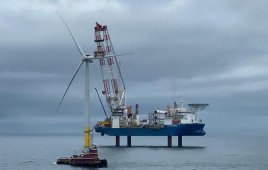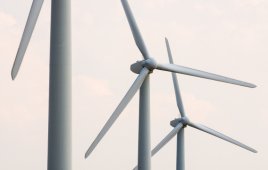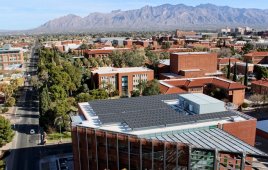This article from the DOE is authored by David Friedman, Acting Assistant Secretary for Energy Efficiency and Renewable Energy, and John Kotek, Acting Assistant Secretary for the Office of Nuclear Energy.
First, a few fast facts
- Nuclear and renewable technologies are crucial parts of the United States’ energy system, providing clean, secure, abundant power.
- Nuclear energy is the largest zero carbon electricity source on the grid today, while renewable energy is the fastest growing form of any electricity source over the last two years.
- The Department of Energy is examining the benefits and potential synergies of energy systems that feature both nuclear and renewable technologies.
- Our two offices – the Office of Nuclear Energy and Office of Energy Efficiency and Renewable Energy – are working to get a better understanding of how useful these types of systems could be.
Nuclear and renewable technologies are crucial parts of the United States’ energy system, providing clean, secure, abundant power. Nuclear energy is the largest zero carbon electricity source on the grid today, while renewable energy is the fastest growing form of any electricity source over the last two years. But, like chocolate and peanut butter, the question is — can these two great technologies be even better together? To help answer this question, the Department of Energy is examining the benefits and potential synergies of energy systems that feature both nuclear and renewable technologies.
First, let’s briefly explain what an integrated energy system is. As the figure below illustrates, an integrated energy system (also known as a nuclear-renewable hybrid energy system) is a co-managed system that has three main components: a nuclear subsystem that produces heat and/or electricity; a renewable subsystem that produces electricity or heat; and an industrial subsystem that produces high-value products like gasoline, potable water, or hydrogen. Integrated systems are unique because they can alter how much energy they provide to their industrial subsystem and the electrical grid depending on the value of each commodity at a given time. The flexible production of energy and industrial goods has the potential to make integrated energy systems more responsive to changing market dynamics, and more profitable for their investors.
An integrated nuclear-renewable energy system
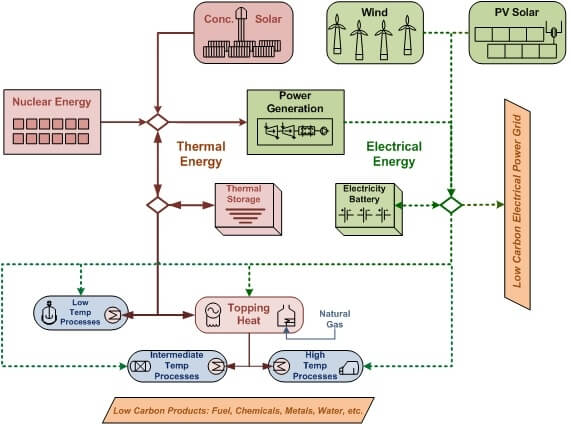
Our two offices — the Office of Nuclear Energy and Office of Energy Efficiency and Renewable Energy — have worked together with the Idaho National Laboratory (INL) and the National Renewable Energy Laboratory (NREL) to host a series of workshops with members of industry, academia, policy makers, and international organizations to get a better understanding of how useful these types of systems could be. Workshop participants identified several potential benefits of integrated nuclear-renewable systems, including the production of flexible, zero-carbon electricity and thermal energy, in addition to short and long term resiliency and reliability benefits to the electrical grid.
Two integrated nuclear-renewable system case studies
Participants also helped to identify two high-priority case studies for the Offices of Nuclear Energy and Energy Efficiency and Renewable Energy and the national labs to initially examine: a synthetic gasoline production facility in Texas and a desalination plant in Arizona. To explore these case studies, the labs conducted technical and economic case study analyses that demonstrated integrated nuclear-renewable systems are technically viable, can be dynamically operated to provide benefits to the grid, and can be profitable for investors under certain market conditions. Additionally, the labs helped us create a technology development plan to identify critical research, development, and demonstration opportunities for nuclear-renewable technologies.
But, we didn’t stop there. INL and NREL recently completed three analyses to further enhance our understanding of integrated nuclear-renewable systems.
Generation and use of thermal energy in the U.S. industrial sector and opportunities to reduce its carbon emissions
Industry uses approximately 30% of all the energy consumed in the U.S. and is responsible for 30% of our total carbon emissions. Most of this energy is used to combust fossil fuels to make heat that can convert raw materials into valuable commodities. This study surveyed 14 of the most energy and carbon intensive activities, analyzed the thermal and electrical energy requirements of each industry’s manufacturing processes, and identified possible advanced technologies, like small modular nuclear reactors, concentrated solar power, geothermal, and integrated nuclear-renewable energy systems that could replace the fossil fuel generated heat. The report concluded that nuclear-renewable systems could meet the thermal and electrical energy needs of biofuel production, wastewater purification, desalination, hydrogen generation, food processing, synthetic gasoline production, chemical manufacturing, and pumped hydro and compressed-air storage.
Calculated combustion energy by end use and target industry in 2014
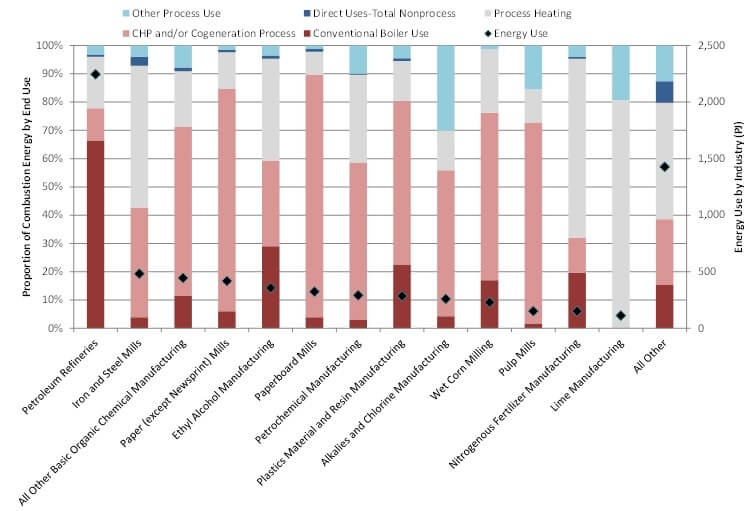
Status on the component models developed in the Modelica framework: high-temperature steam electrolysis plant & gas turbine power plant
To better understand the complex interactions between thermal and electrical subsystems in integrated technologies, INL, with the support of the Oak Ridge National Laboratory and the Argonne National Laboratory, developed a dynamic modeling framework called Risk Analysis Virtual Environment (RAVEN) using the Modelica programming language. RAVEN allowed the labs to simulate how a high temperature electrolyzer would interact with a nuclear-renewable system to produce hydrogen for industrial or transportation applications. The illustration below shows that the simulated integrated system could potentially produce a half-kilogram of hydrogen per second, equal to roughly 13 metric tons per year, all without producing any harmful emissions.
Hydrogen production summary using RAVEN and Modelica
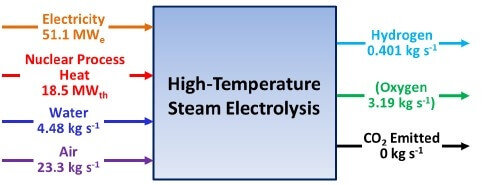
The economic potential of three nuclear-renewable hybrid energy systems providing thermal energy to industry
This report assesses the economics of integrated systems that sell thermal products (steam or high-temperature heat transfer fluids) to industrial customers, like chemical or paper manufacturers. The analysis demonstrates that under certain market conditions integrated nuclear-renewable systems may profitably sell their heat to industrial customers, significantly reducing industrial greenhouse gas emissions while simultaneously providing short and long term benefits to the grid. The figure below shows two potential integrated configurations that provide thermal energy for industrial applications.
Integrated systems that could supply industry with thermal energy
The Department of Energy’s research and analysis to date shows that integrated nuclear-renewable energy systems have the potential to provide zero-carbon electricity, zero-carbon energy to industry, produce high value goods like synthetic gasoline, and improve the operation of the grid. Going forward, our offices plan on investigating ways that nuclear and renewable technologies can cost-effectively work together to produce zero-carbon energy, produce other high value products like hydrogen, and help de-carbonize the U.S. economy. Ultimately, our goal is to evaluate the role of nuclear and renewable energy — either separate or integrated — can play as essential components of the clean, affordable, domestic energy needed to power America’s economy.
Filed Under: Policy





